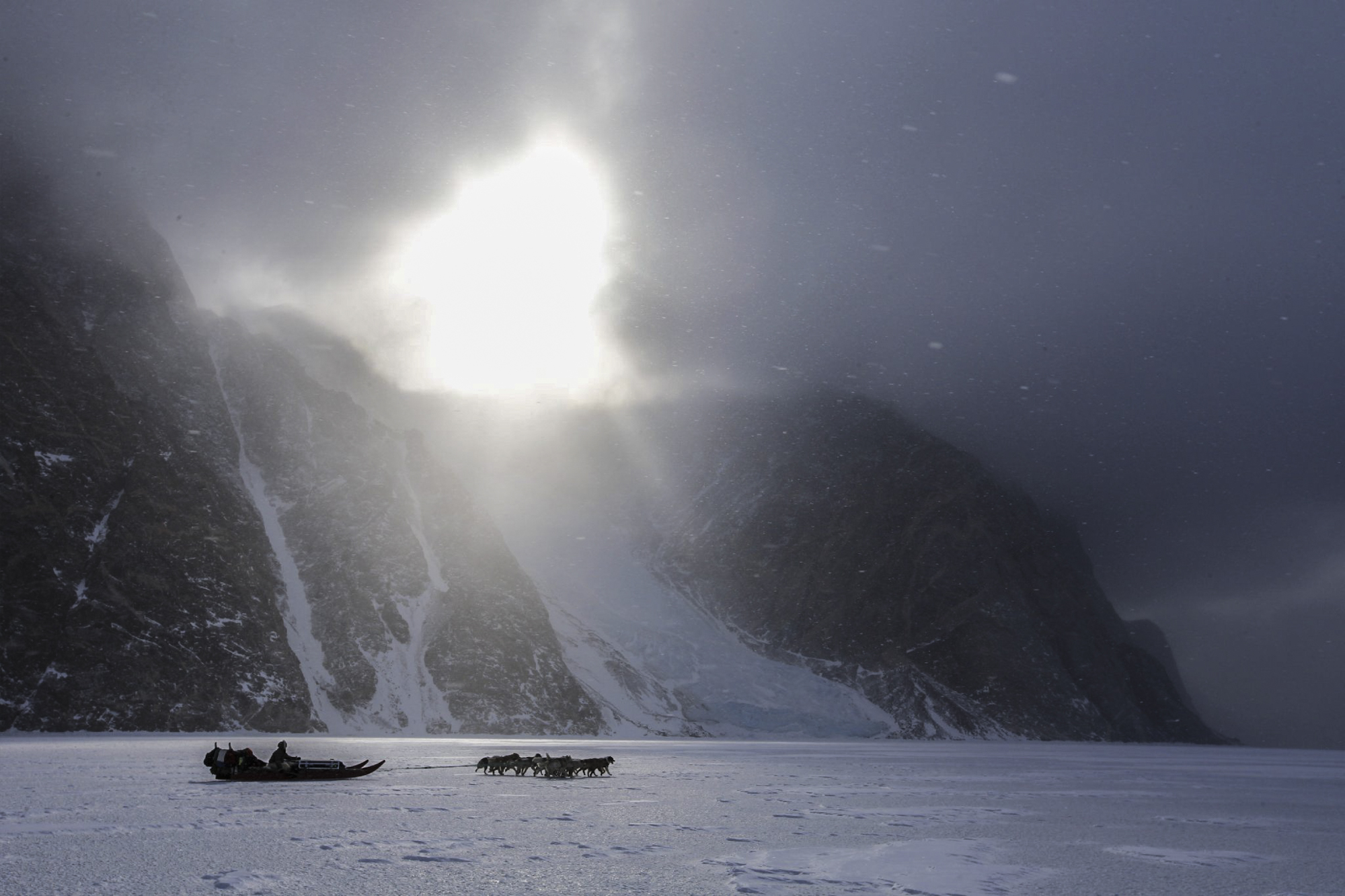Paul Nicklen | Born to Run: The Sled Dogs of the Far North

This is a guest post by WWSG exclusive speaker, Paul Nicklen.
When I stepped off the plane on location for my next National Geographic assignment, I was immediately hit with a wave of nostalgia. It had been years since I left my hometown on Baffin Island in Canada’s far north, but the Arctic is the kind of place you can never truly leave. Years of traipsing through snow, thawing out by the stove, and spending polar nights watching the aurora borealis overhead has a way of sticking with you. The Arctic will always be a part of who I am. On this particular assignment, however, I was even further north of the Arctic circle in the frozen town of Qaanaaq—the last true stronghold of the Greenlandic sled dog. The next few weeks proved to be incredibly challenging, harrowing, and, at the same time, heartwarming thanks to the generosity of the Inuit and the extraordinary resilience of their canine companions.

‘Husky Huddle’ © Paul Nicklen photography

‘Dog Days of Winter’ © Paul Nicklen photography
|
|

‘Frozen Highway’ ‘Husky Huddle’ © Paul Nicklen photography
Hunter Hunter Naimanngitsoq Kristiansen with his team of sled dogs. Built like tiny polar bears, the dogs had a raw kind of power and energy to them, heeding only the call of their musher. Their relationship with the Inuit is an ancient alliance based on trust, loyalty, and discipline – a partnership between species forged to overcome some of the harshest conditions on Earth.

‘Wise Pack’ ‘Husky Huddle’ © Paul Nicklen photography
Greenlandic sled dogs must be strong, intelligent, focused, courageous, and capable of protecting a hunter as they venture out onto the sea ice.
Journey to the Floe Edge



Finally, after making the necessary preparations, our team was ready to join a group of Inuit hunters setting out on a three day journey to the sea’s floe edge by qamutiik or sled. Each year as the ice recedes a little faster, the window to secure seals and other sources of food for the isolated community grows shorter. Racing against time and the elements, we chased the pale orb of the midnight sun over the vanishing sheet of sea ice, braving blizzards and treacherously thin patches.
Even when loaded down with food, supplies, and camping equipment, qamutiiks can reach extremely high speeds. If a driver loses control of their team, they would face the unlikely proposition of surviving a dark winter night on the sea ice in minus forty-degree weather. Well-trained dogs are the last line of defense when one slip-up is the difference between life and death. Moreover, warming temperatures have heightened the risk by making travel over ice more perilous than ever. We learned this the hard way about halfway through the journey when, in one heart-stopping second, a team running ahead of us suddenly vanished after hitting a deceptively thin patch of ice.

Thankfully, the hunters sprang into action and quickly rescued all but one of the dogs in what is becoming a more common and tragic occurrence on the ice. Remote and isolated, the Inuit have long depended on healthy sea ice to travel and secure food. Their culture, heritage, and safety, as well as the safety of their trusted canines, are all silently eroding along with the disappearing ice.


Cold Hands, Warm Hearts
The residents of Qaanaaq, both people and dogs, have their fair share of challenges to navigate in the Arctic’s rapidly changing landscape. Some things, however, will always remain constant. Throughout Inuit culture, there is a pervasive ethos of quiet and kind hospitality that surpasses all boundaries and transcends language barriers. It seems the people with the warmest hearts tend to come from the coldest places, a truth I have cherished since childhood when I was welcomed into the homes of my Inuit neighbors. I will always be grateful for the time I have spent learning from the true masters of the northern realms and hope sharing their story will inspire change for a better future.
With immense gratitude,

See More of Paul’s Arctic Photography





